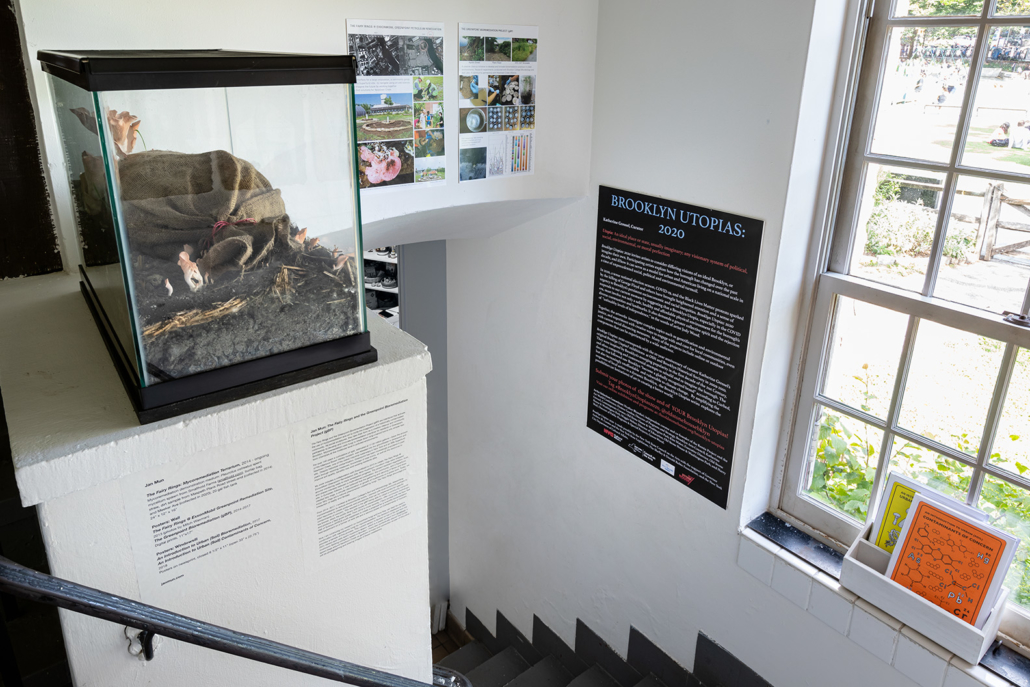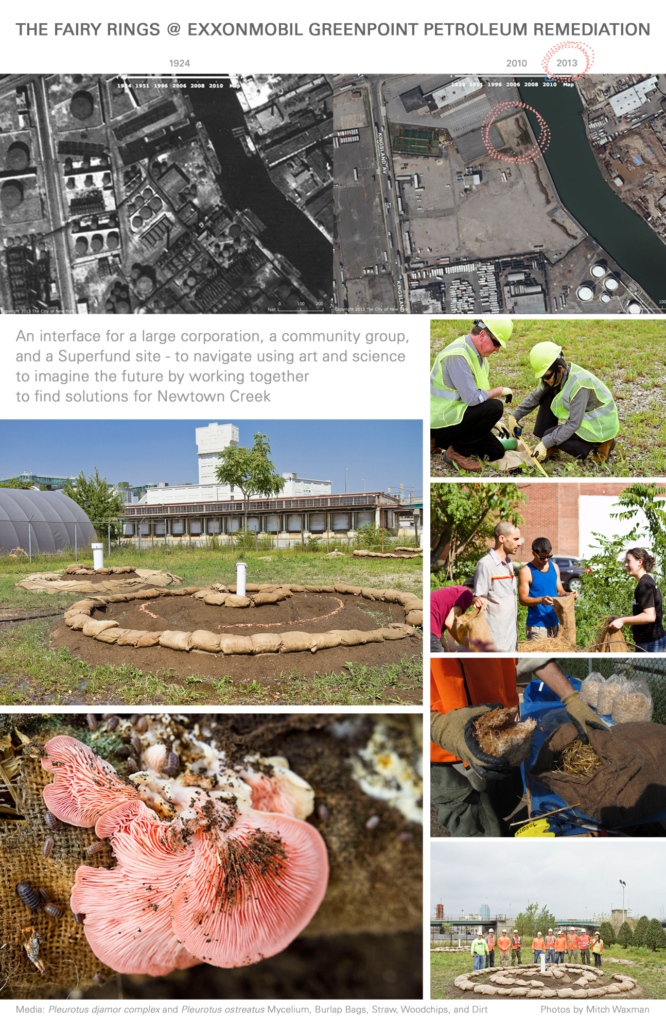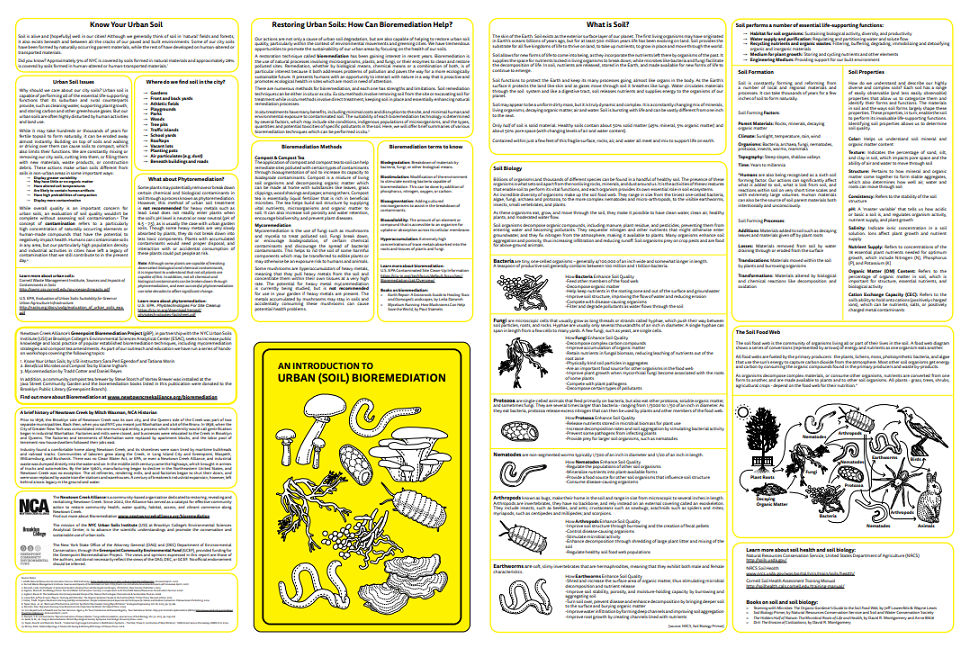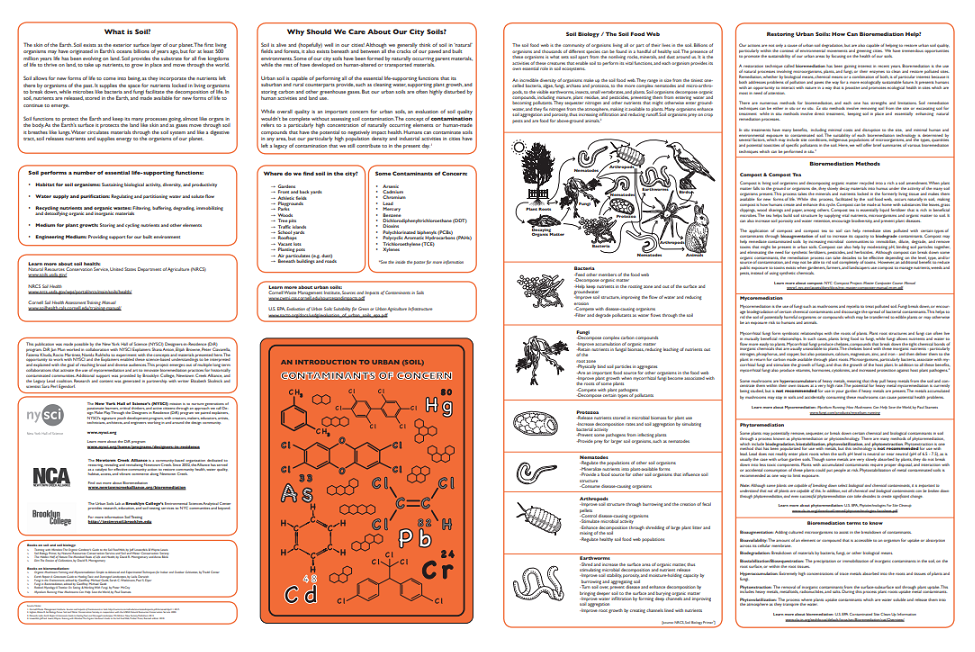JAN MUN
THE FAIRY RINGS & GREENPOINT BIOREMEDIATION PROJECT
The Fairy Rings and the Greenpoint Bioremediation Project (gBP) are interfaces that activate the use of mycoremediation and art to incite the imagination of a historically contaminated community. As social sculptures, they take their form as a creative cleanup and community partnership to develop and innovate bioremediation practices for residents in Greenpoint, Brooklyn. Mycoremediation uses fungi to break down long-chained toxins into simpler less toxic chemicals at the molecular level in polluted environments.
For over 140 years a cumulative oil spill, estimated at 17-30 million gallons—twice the amount of the infamous Exxon Valdez incident, was released into the groundwater in Greenpoint and Newtown Creek, one of the oldest industrial waterways in New York and an EPA Superfund site. Despite historical contamination, Greenpoint has been increasingly populated in past years through rezoning measures. Knowledge of area toxins, as well as the resources to improve soil quality, benefits new and existing residents alike.
My work includes a collaboration with ExxonMobil in 2013 to create The Fairy Rings @ ExxonMobil Greenpoint Remediation Site. Nine mushroom mycelium rings were wrapped around monitoring wells to track remediation progress. The project explored negotiation, trust, and shared interests between a multinational corporation, the community, and a Superfund site. In European folklore, it was believed that the gathering and dancing of fairies and elves created fairy rings, a circular discoloration or growth of mushrooms on a grass lawn. Today, we know fairy rings are a natural phenomenon created by fungi. The Fairy Rings encourage the interaction of reality and fantasy.
From 2014- 2017, I worked at Brooklyn College’s Soil and Microbiology lab, researching mycoremediation and existing beneficial microorganisms to reduce environmental toxins. I worked with local community partners to network and pool resources to create protocols and procedures that can be implemented to specific contaminants of concern. This resulted in the gBP being able to install a community compost tea brewer, stock the public library with books on bioremediation, offer workshops to the community and produce a field guide poster. From 2018 to more recently, I have worked with the New York Hall of Science (NYSCI) youth explainers to create a proposal for a scientific bioremediation field experiment on a former oil tank site and a second poster on Contaminants of Concern. Now I am continuing my research on mycorrhizal fungi and how they can best be used in combination with saprotrophic fungi for mycoremediation.
The terrarium displayed at OSH provides a sample of this process. This current version is layered on top of the soil from the 2014 version and uses spent mushroom spawn, which is a waste product from Smallhold, a mushroom farming company based in Brooklyn. I have also symbolically placed new burlap spawn bags around Newtown Creek as gestures of hope and connection as part of this piece. I will be photographing and sharing images of these installations.

The Fairy Rings: Mycoremediation Terrarium (2014)
Mycoremediation demonstration medium: Pleurotus ostreatus spent mycelium spawn from Smallhold Farms, burlap bag, straw, dirt sample from Maspeth Plank Road street-end (collected in 2014) and Apollo Street (collected in 2020), 20 gal fish tank
Exhibition Photography by Etienne Frossard

The Fairy Rings @ ExxonMobil Greenpoint Remediation Site (2013)
Digital print with photos by Mitch Waxman
11″ x 17″

An Introduction to Urban (Soil) Bioremediation (2017)
Info-graphic poster on newsprint
Closed 8 1/2″ x 11″, Open 33” x 22.75″

An Introduction to Urban (Soil) Contaminants of Concern (2018)
Info-graphic poster on newsprint
Closed 8 1/2″ x 11″, Open 33” x 22.75″
ABOUT THE ARTIST
As a media artist, Jan Mun creates social sculptures using digital and living media. The landscape has become the framework through which she unfolds stories about others and herself using a combination of artistic and scientific processes that manifest as social engagements, interactive installations, photography, and bio-art. She creates interfaces to elicit participation as a reflection and critique of our political and social systems. Working with communities such as The Honeybee Conservancy, Newtown Creek Alliance, and the Soil & Microbiology labs at Brooklyn College, Jan innovates ideas to be realized through research, chance, and collaboration.
